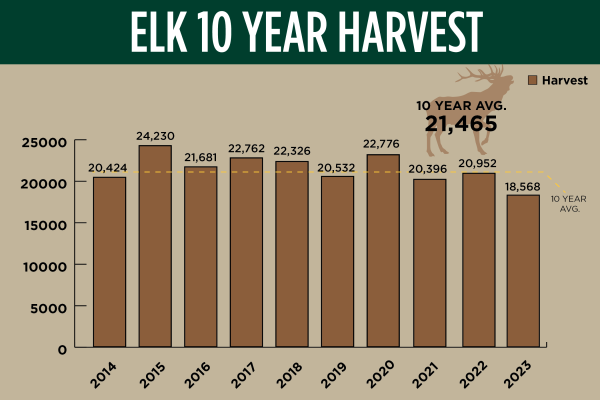Terminal Attraction – Hunting Plot Basics
 If you manage your property for whitetails you probably plant some of your food plot acreage right now, during the late summer or fall. Much of what will be planted during this time are crops that are meant for attraction. Some of the plants also have great nutritional value as well, but most hunters really don’t think about that, they want a plot that will give them harvest opportunities. For this type of “hunting plot,” plant selection, plot design and timing are very important determinants for success.
If you manage your property for whitetails you probably plant some of your food plot acreage right now, during the late summer or fall. Much of what will be planted during this time are crops that are meant for attraction. Some of the plants also have great nutritional value as well, but most hunters really don’t think about that, they want a plot that will give them harvest opportunities. For this type of “hunting plot,” plant selection, plot design and timing are very important determinants for success.
Deciding “what to plant” and “plot design” go hand in hand. In my view, variety is a noteworthy key when designing a hunting plot. Because of all of the changes happening in the whitetails’ world during the fall, you should never “put all of your eggs in one basket.”
With a “hunting plot” the goal is to draw them in so you can kill them, or to use it as a magnet so they can be intercepted on the way to the plot. In these plots it’s best to “leave the table set” for them throughout the season. If you just plant one thing you are limiting the attraction timeframe to only when that specific crop is at its peak. With more choices, more plants will peak at different times.
I like to plant in sections, or better yet, strips. Obviously plot design, shape and size has everything to do with which (strip or section), but if the situation allows, I like to plant strips as wide as my sprayer’s swath. This way it’s easy to treat Roundup Ready crops or spray selective herbicides. I may divide a plot into two, to as many as six sections, depending upon how large the plot is. You must have adequate acreage to do this “variety tactic” justice. For instance if you have only a ¼ acre plot you’re probably better off planting just one blend. Otherwise, there’s not going to be enough of any one cultivar to keep them coming back. When a plant turns attractive they’ll wipe you out too soon.
Depending upon where you are in the country, some of my “hunting plot” choices are spring planted items – for instance; if I have enough acreage, corn will be on the menu (or a corn-soybean blend). I might also add some annual legumes like soybeans or iron & clay peas. During the late summer planting season, three of the main plant types I will choose will be brassicas, perennial legumes and cereal grains. With these four types of plantings (a perennial with clovers and chicory, corn, several varieties of brassicas and a blend of cereal grains) there will be a plant type that will keep them coming to the site from before bow season starts until the season ends or the plot runs out of food. These four choices are simple and easy to plant. I may plant a number of other crops, but these are definitely the mainstays to a good hunting plot.
Day in and day out clovers can be very attractive to whitetails and at certain times chicory is one of the best magnets I’ve ever seen. Clover Plus is the blend I will typically choose for this job because the New Zealand clovers are more attractive and produce more leaf matter then our US clovers do. Here in the south, Premium Perennial or Perfect Plot may be a better choice because of the flush of annual brassicas for the fall hunting season. The following year I may over-seed to fill in the spots vacated by the brassicas with straight Clover Plus.
With the corn and soybeans we have another angle covered. The carbohydrates that the corn produces will attract when cold temperatures arrive and depending upon what time of the season it is they will consume the soybean leaves early and the dried beans during late season.
Brassicas are, in my view, the best deer food God has ever created. They are a great choice for when cold temperatures convert the plant’s high levels of starch to sugar – when that happens – look out! I have not seen a better late season draw.
Whitetails will react differently to brassicas in various areas and habitat types. Some brassicas may be better off for a wintertime food source in a “nutrition plot” than a source of attraction for hunting time. Test different brassicas and see for yourself. Deer Radish and Winter Bulbs & Sugar Beets are my favorite crops for hunting time attraction.
Lastly, Outfitter’s Blend, Last Bite, Trophy Oats, or a blend with a high ratio of cereal grains is the final piece of the puzzle. The energy that plants like oats, wheat or triticale produce will be desired by both bucks and does during the fall. Timing your planting is important with these plants since most cereal grains are generally palatable during their first 45 to 60 days of growth. You want to plant them so that are at the peak of their attractiveness when you want to hunt the site.
The variety of crops is also important because of the wide range of conditions your herd will face. During early season as an example, they may be eating your perennials heavy, but then a twenty degree temperature drop occurs and they change to your cereal grains. It’s best to be prepared – if you have adequate acreage to devote you should have a plant available that covers their needs regardless of the time or the conditions.
I’m not saying that you are going to sit on the edge of your hunting plot and knock over a trophy buck standing in it. You may need to set up an ambush to try and intercept him on his way to the plot several hundred yards off. However, if you do things right and don’t put pressure on the spot, you can harvest Pope & Young size whitetails right in your plot. Regardless of where you set up for the ambush, your hunting plot and the crops you have chosen are the reasons he’s traveling to the area.
Would you like to learn more about improving your hunting and get discounts on the products you need? Learn from the experts by joining the new Mossy Oak GameKeepers Club at www.gamekeepersclub.com. Or call 844-256-4645.






